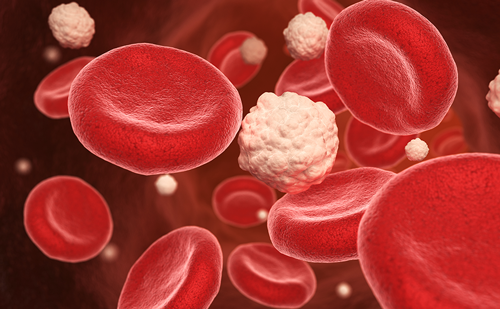
The 3-year results from the SURMOUNT-1 trial, published in the New England Journal of Medicine, have revealed that tirzepatide significantly reduced the risk of progression to type 2 diabetes (T2D) in individuals with obesity and prediabetes. T2D onset was reported in just 1.3% of those receiving tirzepatide, compared with 13.3% in the placebo group.
SURMOUNT-1 (ClinicalTrials.gov ID: NCT04184622) was an international phase III, double-blind, randomized controlled trial investigating tirzepatide as a treatment for obesity, with the duration of treatment determined by participants’ glycaemic status. In the initial phase of the study, participants with obesity and without prediabetes were offered 72 weeks of treatment, while those with obesity and prediabetes were offered an extended continuation of 176 weeks of treatment.1
A total of 1,032 participants with obesity and prediabetes (mean age 48.2 years; 63.9% female; 73.4% white) were included in the 176-week extension. These participants were randomized 1:1:1:1 to receive tirzepatide 5 mg, 10 mg, 15 mg or placebo. At baseline, their mean body weight was 107.3 kg and mean BMI was 38.8 (37.2% with BMI ≥40). Treatment was administered subcutaneously once weekly for the 176 weeks and followed by a 17-week off-treatment period.1
In the 65.6% of the participants who completed the trial, the mean percent change in body weight from baseline was -12.3% in those receiving the 5-mg dose of tirzepatide (95% CI, −14.5 to −10.2, p<0.001), −18.7% with the 10-mg dose (95% CI, −24.1 to −13.4, p<0.001) and −19.7% with the 15-mg dose (95% CI, −22.1 to −17.3,p<0.001) as compared with −1.3% among those who received placebo (95% CI, −4.0 to 1.5, p<0.001).1
Regarding the prevention or delay of T2D, at week 176, onset of T2D was noted in a total of 10 participants (1.3%) on tirzepatide (4 [1.5%] at the 5-mg dose, in 5 [2%] at 10-mg, and 1 [0.4%] at 15-mg) and in 36 participants (13.3%) who received placebo (HR, 0.07; 95% CI, 0.0 to 0.1; p<0.001).1
“Individuals treated with tirzepatide lost on average up to 23% of their body weight and maintained this for over 3 years, while benefitting from a substantial decrease in risk of developing type 2 diabetes,” lead author Ania M. Jastreboff, MD, PhD, director of the Yale Obesity Research Center, said in a statement.2 “In absolute terms, nearly 99% of individuals treated with tirzepatide remained diabetes-free at 176 weeks. These results are impressive given the degree of sustained weight reduction and decrease in risk of diabetes”.2
Following the 17-week off-treatment period, modest weight regain and a rise in A1c levels were observed in participants who had received tirzepatide. This rise caused some patients to revert to the prediabetes category, while others progressed to diabetes. In this period, T2D was reported in 18 participants (2.4%) in the tirzepatide group, compared with 37 participants (3.1%) in the placebo group (HR, 0.12; 95% CI, 0.1 to 0.2; p<0.001).1
The safety and tolerability profile of tirzepatide was noted to be consistent with previous clinical studies. The most common adverse events were mostly mild to moderate gastrointestinal and COVID-19-related events, occurring more frequently with tirzepatide than placebo.1
These results show that T2D may be prevented, even in people who are on the verge of it, by using a medicine that causes weight loss,” said study co-author Dr. Louis Aronne, the Sanford I. Weill Professor of Metabolic Research and director of the Comprehensive Weight Control Center, Weill-Cornell Medical College.3
Overall, these findings lend support to the potential of tirzepatide to maintain weight reduction and glycaemic improvements but suggest that perhaps therapies would need to be continued long-term.
Click here to read the related article.
Click here for further content in the field of obesity and diabetes.
References:
- Jastreboff AM, et al.Tirzepatide for Obesity Treatment and Diabetes Prevention. N Engl J Med. 2024; Online ahead of print. doi: 10.1056/NEJMoa2410819.
- Eli Lilly and Company. Treatment with tirzepatide in adults with pre-diabetes and obesity or overweight resulted in sustained weight loss and nearly 99% remained diabetes-free at 176 weeks [Press release]. Available at: https://investor.lilly.com/news-releases/news-release-details/treatment-tirzepatide-adults-pre-diabetes-and-obesity-or (accessed 6 January 2024).
- co.uk. Type 2 diabetes risk among obese people reduced by tirzepatide. 2024 [Press release]. Available at: https://www.diabetes.co.uk/news/2024/dec/type-2-diabetes-risk-among-obese-people-reduced-by-tirzepatide.html#google_vignette (accessed 6 January 2024).
Disclosure: This article was created by the touchENDOCRINOLOGY team utilizing AI as an editorial tool (ChatGPT (GPT-4o) [Large language model]. https://chat.openai.com/chat.) The content was developed and edited by human editors. No funding was received in the publication of this article.









